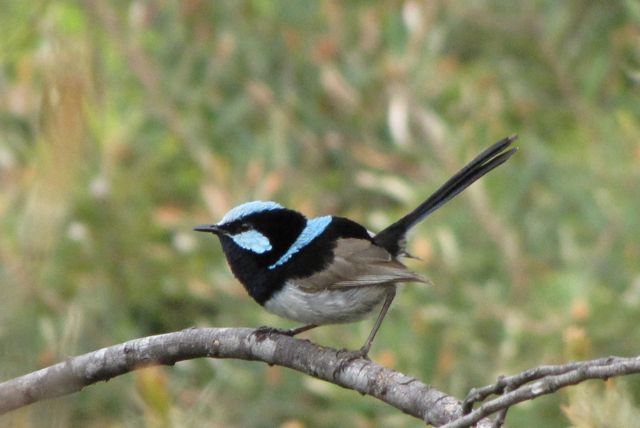
By Alan Contreras
Alan L. Contreras is a writer living in Oregon. A fourth-generation Oregonian born in Tillamook County, he is a graduate of the University of Oregon and its law school. He writes primarily about natural history and higher education. Author of eight books from Oregon State University Press, he has published on a variety of topics. He also operates Oregon Review Special Editions, a small press that focuses on historical material related to the Northwest and specialty reprints.
Mat Gilfedder visited Oregon before I went to Australia. On a later trip, I showed him his first Evening Grosbeak but he had more than compensated me with a remarkably full and successful day of birding on December 2, 2009. Quick dawn-time stops at a University of Queensland parking lot provided a pair of Bush Thick-knee that Mat knew had been hanging about. A nearby creek crossing provided a crisp look at a Brahminy Kite. A few other birds were dropping onto our day’s list by then at a couple of short stops.
We began our first major stroll by walking the outer edge of a large open-space area in southwestern Brisbane called Oxley Creek Common. This proved very productive, especially for both Variegated and Red-backed Fairywren, as well as a few Superb Fairywrens. We walked perhaps a mile along the dense cover by the creek with the open country to our left. This allowed for a good variety of birds, from Australian Pipit and Brown Falcon (which flies like a North American kite or a harrier) on the left to Silvereyes, fairywrens, and my first Laughing Kookaburra cackling away in the edge of the woods.
At the end of this long path a couple of ponds provided ducks, the Australian cormorants, and a cow in the path. The Common, as a concept, comes to Australia from Great Britain, where it features in literature as well as daily life. Having recently read some of Patrick O’Brian’s novels, I was not surprised that a public common might include a cow, as indeed my brief wanderings between Cambridge and Grantchester may have, but this particular cow was rather limited in mental capacity.
As we approached, it sidled down off the trail until it pressed up against a barbed-wire fence. We edged along as far from the cow as we could get, but it was nervous and suddenly attempted to leap away from us. Not being a goat, its leap consisted of about a six-inch rise, but even this effort was enough to move its center of gravity onto the top of the rather saggy fence, whereupon the cow rolled upside-down, over the fence and into the mixture of grass and brush on the other side, where it landed with a saurian thump. Never having seen a (live) cow upside-down before, even momentarily, this distracted me from birding. It may have been a new experience for Mat, too. The cow seemed quite unharmed and shoved its way off into the next bit of grass. The Oxley Creek Common was inundated in the great floods in Brisbane in 2010-11, but I understand that it is now sufficiently recovered to be a good birding spot again.
After this memorable adventure, we went inland into the Lockyer Valley, where a couple of ponds brought us a number of waterbirds, including the Australian Stilts and Ibis. For me, the most memorable of these was the plain gray Marsh Sandpiper, because that is a bird that I have always wanted to find in Oregon, it having occurred a couple of times in California. With a species new to us, we often think we know what to look for, but seeing the actual bird can be either confirmation of what we think it looks and acts like or revelation of how wrong we are. Having now seen a few of these in Australia, I don’t think I would ever be confused about one I found back home—may the day come.
A drier nearby site was not very birdy, but it suddenly offered a couple of Gray-crowned Babblers, which reminded me of a North American thrasher in looks and to some extent in behavior, though perhaps a bit beefier. A dry lakebed down the road contained Masked Lapwing and Red-capped Plover, and not far away a somewhat unexpected Pallid Cuckoo on a wire, which Mat photographed and noted was his first in SE Queensland. Our last stop, in early afternoon, was at a place called Colleges Crossing and offered another gorgeous Brahminy Kite by the creekside and a small flock of White-throated Needletails overhead in a brief waft of rain. As fine a day of birding as anyone could wish, a remarkable 96 species in seven hours, and good looks at most of them.
Cover Photo: Superb Fairywren at Oxley Creek Common, December 2, 2009.
Note: This post is an excerpt from Alan’s new book, “Far Afield: 30 Years of Birding Adventure”. Details about the book can be found at www.alanlcontreras.com











Leave a Comment